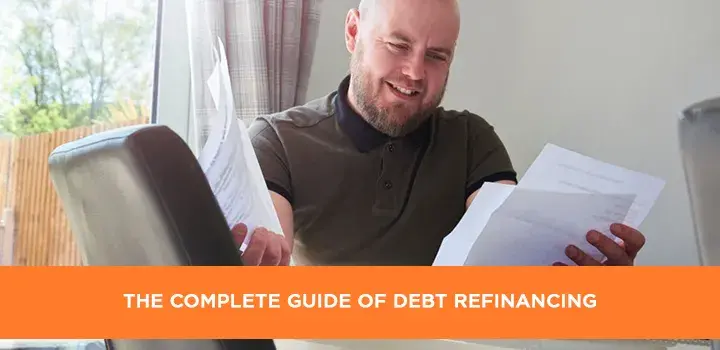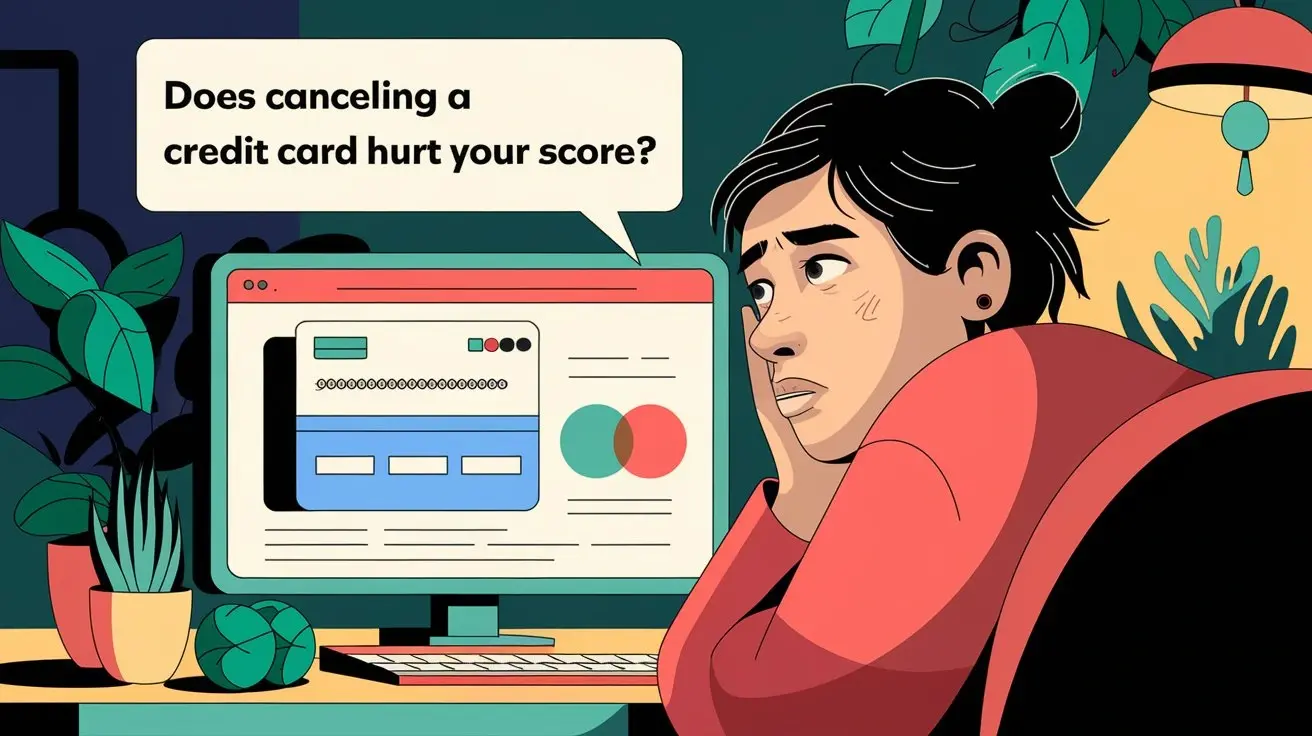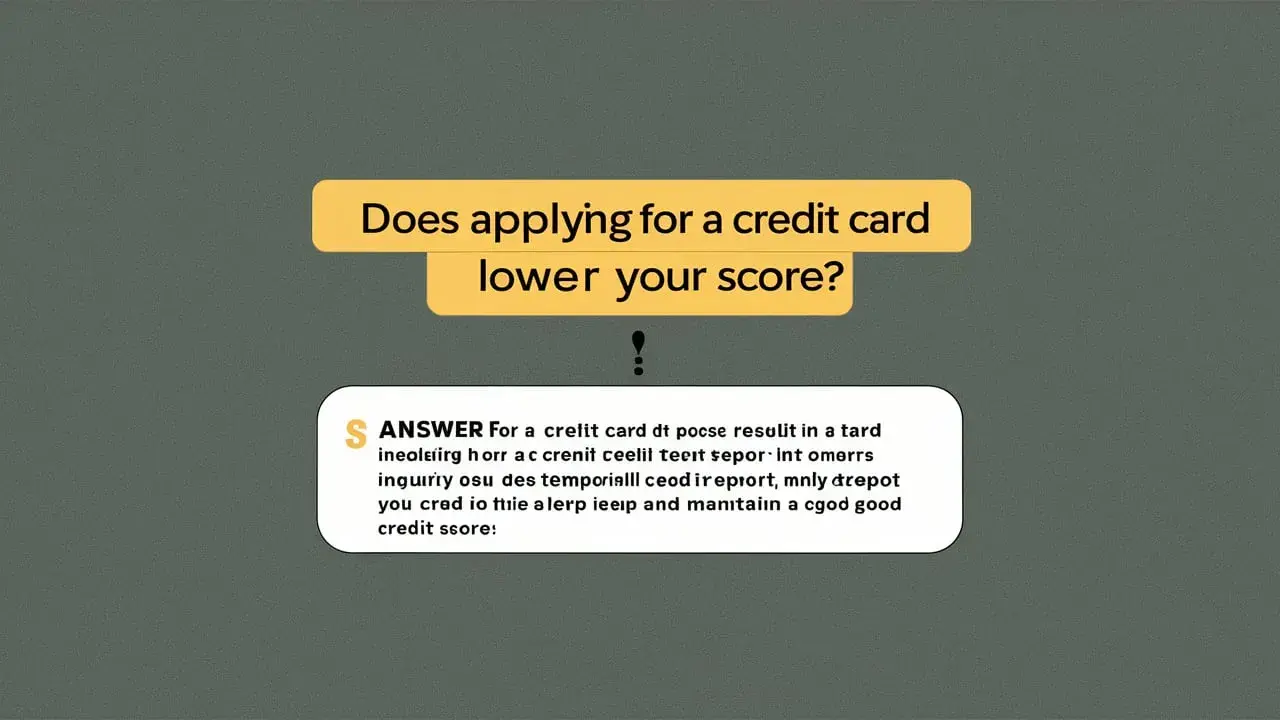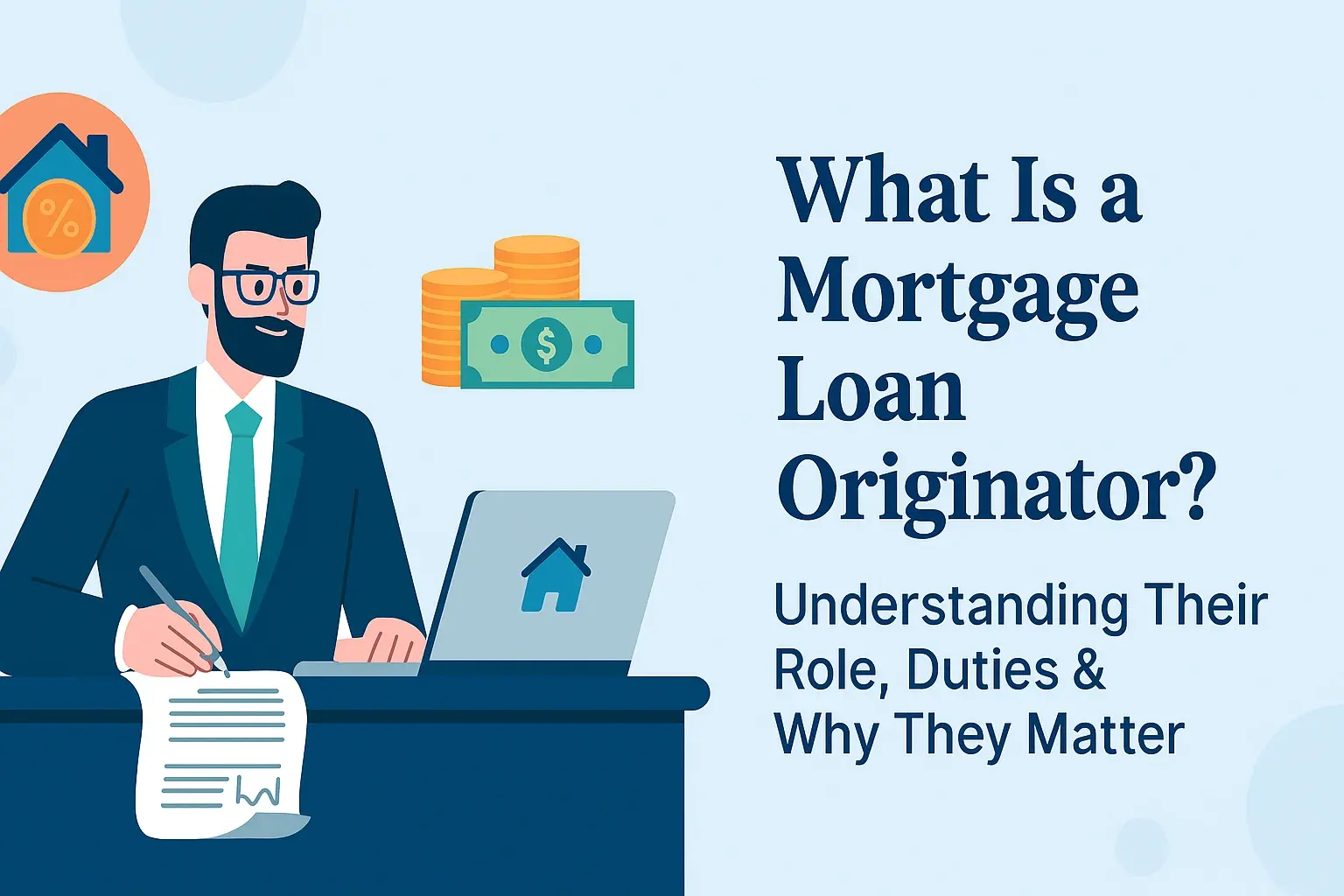-
Posted on: 21 Dec 2022

-
Unlock financial freedom with our comprehensive guide to debt refinancing. Discover how to lower interest rates, consolidate payments, and gain control over your finances. This guide provides actionable strategies and insights for 2025 to help you make informed decisions and achieve your financial goals by effectively managing your outstanding balances.
What is Debt Refinancing?
Debt refinancing is a financial strategy that involves replacing an existing debt with a new debt under different terms. The primary goal is typically to secure a lower interest rate, a more manageable repayment period, or a combination of both. When you refinance, you essentially pay off your old loan or loans with the proceeds from a new one. This process can be applied to various types of debt, including mortgages, auto loans, personal loans, and even credit card debt, although the latter is often addressed through balance transfers or debt consolidation loans which can involve refinancing.
The core idea is to improve your financial standing by reducing the overall cost of borrowing or by simplifying your payment structure. For instance, if you have a high-interest credit card balance, refinancing it into a lower-interest personal loan can significantly cut down on the interest you pay over time, freeing up more of your budget for principal repayment or other financial goals. Understanding the mechanics and implications of debt refinancing is crucial for making sound financial decisions in today's economic landscape.
Why Consider Debt Refinancing?
The decision to refinance debt is driven by a desire for financial improvement. In 2025, with fluctuating interest rates and economic uncertainties, exploring refinancing options can be a strategic move for many individuals and businesses. The primary motivations revolve around saving money and gaining better control over one's financial obligations.
Lowering Interest Costs
Perhaps the most compelling reason to refinance is to reduce the amount of interest you pay. If prevailing interest rates have dropped since you initially took out your loan, or if your creditworthiness has improved, you may qualify for a new loan with a significantly lower Annual Percentage Rate (APR). Over the life of a loan, even a small reduction in APR can translate into substantial savings. For example, refinancing a $30,000 auto loan from 7% APR to 4% APR could save you thousands of dollars in interest over the loan's term.
Reducing Monthly Payments
Refinancing can also help lower your monthly payments. This can be achieved by extending the repayment term of your loan or by securing a lower interest rate. Lower monthly payments can provide much-needed breathing room in your budget, freeing up cash flow for other essential expenses, savings, or investments. This is particularly beneficial for individuals facing temporary financial strain or those looking to improve their immediate cash flow situation. However, it's important to note that extending the loan term may result in paying more interest overall, even with a lower rate.
Consolidating Multiple Debts
For individuals with multiple outstanding debts, refinancing can be a pathway to debt consolidation. By taking out a single new loan to pay off several smaller debts, you can simplify your repayment schedule. Instead of juggling multiple due dates and creditors, you'll have just one payment to manage. This simplification can reduce the likelihood of missed payments and associated fees, and it can also make it easier to track your progress toward becoming debt-free. This often involves taking out a personal loan or using a balance transfer credit card.
Accessing Home Equity
Homeowners may consider refinancing their mortgage to tap into their home's equity. A cash-out refinance allows you to borrow more than you owe on your current mortgage, receiving the difference in cash. This cash can be used for various purposes, such as home renovations, debt repayment, education expenses, or investments. While this can be a powerful tool, it's crucial to weigh the benefits against the increased mortgage balance and potential risks.
Improving Loan Terms
Beyond interest rates and payments, refinancing can also offer improved loan terms. This might include more flexible repayment options, fewer penalties for early repayment, or different collateral requirements. For example, if you have a secured loan and wish to free up the collateral, you might refinance into an unsecured loan, though this often comes with a higher interest rate.
Types of Debt You Can Refinance
The versatility of debt refinancing means it can be applied to a wide array of financial obligations. Understanding which types of debt are most commonly and effectively refinanced can help you identify opportunities for financial improvement. In 2025, as financial markets evolve, the accessibility and benefits of refinancing various debt types continue to be significant.
Mortgages
Mortgage refinancing is one of the most common forms of debt refinancing. Homeowners often refinance to take advantage of lower interest rates, shorten their loan term, or convert their loan type (e.g., from an adjustable-rate mortgage to a fixed-rate mortgage). A cash-out refinance, as mentioned earlier, also falls under this category, allowing homeowners to access their home equity.
Auto Loans
If you have an auto loan, you may be able to refinance it, especially if your credit score has improved since you purchased the vehicle or if interest rates have generally declined. Refinancing an auto loan can lead to lower monthly payments or a shorter loan term, saving you money on interest. Many lenders offer auto loan refinancing, including banks, credit unions, and online lenders.
Personal Loans
Personal loans, which are typically unsecured and used for various purposes like debt consolidation, home improvements, or medical expenses, can also be refinanced. If you secured a personal loan with a high interest rate, refinancing it with a new loan at a lower rate can significantly reduce your borrowing costs. This is a popular strategy for consolidating high-interest credit card debt.
Student Loans
Refinancing student loans can be a complex but potentially rewarding process. Federal student loans can be refinanced into private loans, and private student loans can be refinanced with other private lenders. Refinancing federal loans into private ones means losing federal benefits like income-driven repayment plans and potential forgiveness programs, so this decision requires careful consideration. However, for borrowers with strong credit and stable income, refinancing can lead to lower interest rates and simplified payments.
Credit Card Debt
While not always a direct "refinancing" in the traditional sense of replacing one credit card with another, managing high-interest credit card debt often involves similar principles. Strategies include balance transfers to a new card with a 0% introductory APR or taking out a personal loan or home equity line of credit (HELOC) to pay off the credit card balances. The goal is to move high-interest revolving debt to a lower-interest installment loan or a promotional period with no interest.
Business Loans
Businesses also utilize debt refinancing. This can involve refinancing existing business loans to secure better terms, consolidate multiple business debts, or obtain capital for expansion. Lenders offer various business loan refinancing options, including term loans, lines of credit, and equipment financing.
How to Refinance Your Debt: A Step-by-Step Guide
Embarking on the debt refinancing journey requires a structured approach to ensure you secure the best possible terms and avoid common pitfalls. By following these steps, you can navigate the process effectively and maximize the benefits of refinancing your debt in 2025.
Step 1: Assess Your Current Financial Situation
Before you even begin looking for new loans, take a thorough inventory of your existing debts. This includes understanding the principal balance, interest rate (APR), monthly payment, and remaining term for each debt. Also, review your credit report and score. Lenders will heavily rely on your credit history to determine your eligibility and the interest rate you'll be offered. Identify any errors on your credit report and take steps to correct them.
Step 2: Determine Your Refinancing Goals
What do you hope to achieve by refinancing? Are you primarily looking to lower your monthly payments, reduce the total interest paid over time, consolidate multiple debts into one, or access cash? Clearly defining your goals will help you narrow down your options and evaluate potential offers effectively. For example, if your goal is to save money on interest, you'll prioritize a lower APR, even if it means a slightly longer repayment term.
Step 3: Research Lenders and Refinancing Options
Explore various financial institutions, including banks, credit unions, and online lenders. Compare their offerings for the type of debt you wish to refinance. Look at interest rates, fees (origination fees, closing costs, prepayment penalties), loan terms, and customer reviews. Online lenders often offer competitive rates and a streamlined application process, while credit unions might provide more personalized service and potentially better terms for members.
Step 4: Gather Necessary Documentation
Lenders will require documentation to verify your income, employment, assets, and existing debts. This typically includes pay stubs, tax returns, bank statements, and details of your current loans. Having these documents organized and ready will expedite the application process.
Step 5: Apply for Refinancing
Once you've identified a few promising lenders, submit your applications. It's often advisable to apply to multiple lenders within a short period (usually 14-45 days, depending on the credit scoring model) to minimize the impact on your credit score, as credit bureaus often treat multiple inquiries for the same type of loan within this window as a single inquiry. Be prepared to provide detailed financial information.
Step 6: Compare Loan Offers
After submitting your applications, you'll receive loan offers. Don't just look at the advertised interest rate. Carefully examine the APR, which includes fees, and compare the total cost of each loan over its lifetime. Consider the monthly payment, the total repayment amount, and any associated fees. A slightly higher APR with no fees might be more attractive than a lower APR with substantial origination charges.
Step 7: Finalize the Loan and Pay Off Old Debts
Once you've chosen the best offer, you'll proceed to finalize the loan. This may involve signing loan documents and undergoing a final underwriting process. The new lender will then disburse the funds, which will be used to pay off your existing debt(s). Ensure that your old accounts are officially closed and paid in full to avoid any confusion or continued charges.
Step 8: Adjust Your Budget and Monitor Progress
With your new loan in place, adjust your budget to reflect the new monthly payment. Continue to make payments on time to maintain a good credit standing. Monitor your progress towards your debt-free goals and consider how the savings from refinancing can be redirected to accelerate your repayment or other financial objectives.
Key Factors to Consider When Refinancing
Making an informed decision about debt refinancing involves evaluating several critical factors. Overlooking these can lead to a refinancing arrangement that is less beneficial or even detrimental to your financial health. In 2025, understanding these elements is paramount for successful debt management.
Credit Score and History
Your credit score is arguably the most significant factor. A higher credit score (generally 700 and above) indicates lower risk to lenders, making you eligible for lower interest rates and better loan terms. If your credit score has improved since you took out your original loan, you are in a strong position to refinance. Conversely, a low credit score may limit your options or result in higher interest rates than you currently have.
Interest Rates (APR)
The Annual Percentage Rate (APR) is the true cost of borrowing, encompassing the interest rate plus any fees associated with the loan. When comparing refinancing offers, focus on the APR. A lower APR means you'll pay less in interest over the life of the loan. It's crucial to compare the APR of the new loan to the APR of your existing debt(s) to ensure a tangible benefit.
Loan Fees and Closing Costs
Refinancing often comes with fees, such as origination fees, appraisal fees, title insurance, and recording fees, particularly for mortgages. These costs can add up and may offset the savings from a lower interest rate, especially if you plan to pay off the loan early. Calculate the break-even point – the time it takes for the savings from the lower interest rate to cover the refinancing costs.
Loan Term and Monthly Payments
Refinancing can involve extending or shortening the loan term. Extending the term will lower your monthly payments but will likely increase the total interest paid over time. Shortening the term will increase your monthly payments but will reduce the total interest paid and help you become debt-free faster. Choose a term that aligns with your financial goals and current budget.
Prepayment Penalties
Some loans have prepayment penalties, which are fees charged if you pay off the loan early. This is particularly common with certain types of mortgages and private student loans. Ensure that your new loan does not have a prepayment penalty if you intend to pay it off ahead of schedule, or factor this potential cost into your calculations.
Existing Loan Type and Terms
Consider the type of debt you are refinancing. For example, refinancing federal student loans into private loans means losing federal protections. Refinancing a fixed-rate mortgage into an adjustable-rate mortgage might offer a lower initial rate but carries the risk of future rate increases. Understand the implications of changing loan types.
Your Financial Goals
Ultimately, the decision to refinance should align with your broader financial objectives. Are you aiming for aggressive debt reduction, improved monthly cash flow, or funding a major purchase? The best refinancing option for you will depend on your personal circumstances and what you aim to achieve.
Pros and Cons of Debt Refinancing
Like any financial strategy, debt refinancing presents both advantages and disadvantages. A balanced understanding of these pros and cons is essential for making a decision that truly benefits your financial well-being in 2025 and beyond.
Pros of Debt Refinancing
- Lower Interest Rates: This is often the primary benefit, leading to significant savings on the total cost of borrowing.
- Reduced Monthly Payments: A lower interest rate or extended loan term can decrease your monthly financial obligations, improving cash flow.
- Debt Consolidation: Combining multiple debts into a single loan simplifies repayment and can reduce the risk of missed payments.
- Improved Cash Flow: Lower monthly payments can free up funds for other financial priorities like saving, investing, or emergency funds.
- Access to Equity (Homeowners): Cash-out refinances allow homeowners to leverage their home equity for various needs.
- Potential for Shorter Loan Terms: If your goal is to pay off debt faster, refinancing can sometimes allow for this with a lower overall interest cost.
- Switching Loan Types: You can move from an adjustable-rate to a fixed-rate loan for payment stability, or vice versa if rates are favorable.
Cons of Debt Refinancing
- Fees and Closing Costs: Refinancing can involve significant upfront costs that need to be recouped through savings.
- Extended Loan Term: While it lowers monthly payments, extending the loan term means paying more interest overall and taking longer to become debt-free.
- Risk of Higher Interest Rates: If interest rates have risen since you took out the original loan, refinancing may result in a higher APR.
- Loss of Benefits: Refinancing federal student loans into private loans means losing federal protections and repayment options.
- Potential for Increased Debt: A cash-out refinance increases your total debt burden.
- Impact on Credit Score: Applying for new credit can temporarily lower your credit score due to hard inquiries, although responsible repayment of the new loan will improve it over time.
- Not Always Beneficial: If your credit score hasn't improved or interest rates haven't fallen, refinancing may not offer any significant advantages.
Refinancing vs. Debt Consolidation: What's the Difference?
While often used interchangeably, refinancing and debt consolidation are distinct financial strategies, though they can overlap. Understanding their nuances is key to choosing the right approach for your debt management needs in 2025.
Debt Consolidation
Debt consolidation is the process of combining multiple debts into a single, larger debt. The primary goal is to simplify payments and potentially reduce the overall interest rate or monthly payment. Common methods of debt consolidation include:
- Balance Transfer Credit Cards: Moving balances from high-interest credit cards to a new card with a 0% introductory APR.
- Debt Consolidation Loans: Taking out a new personal loan to pay off multiple smaller debts, leaving you with one monthly payment.
- Home Equity Loans or HELOCs: Using the equity in your home to pay off other debts.
Debt consolidation doesn't necessarily mean you are changing the terms of the original debt; rather, you are using a new financial product to pay off existing ones.
Debt Refinancing
Debt refinancing, on the other hand, specifically involves replacing an existing debt with a new loan that has different terms. The original debt is paid off, and a new one takes its place. This is common for:
- Mortgages: Replacing your current mortgage with a new one at a different interest rate or term.
- Auto Loans: Refinancing your car loan to get a better rate or payment.
- Student Loans: Replacing existing student loans with a new private loan.
The key distinction is that refinancing is about altering the terms of a *specific* debt, while consolidation is about *combining* multiple debts.
The Overlap
The confusion arises because debt consolidation often involves refinancing. For example, when you take out a debt consolidation loan, you are essentially refinancing your existing debts into this new loan. Similarly, refinancing a mortgage to pull out cash to pay off credit cards is both refinancing the mortgage and consolidating other debts.
In essence:
- Debt Consolidation: Focuses on combining multiple debts.
- Debt Refinancing: Focuses on replacing a single debt with a new one with better terms.
Often, you'll use one strategy to achieve the goals of the other.
Refinancing Options and Lenders for 2025
Navigating the landscape of refinancing options and lenders in 2025 requires an understanding of the available avenues and the institutions that provide them. The market offers a diverse range of choices, catering to different borrower needs and debt types.
Traditional Banks and Credit Unions
These institutions have long been staples in the financial world. They offer a full spectrum of loan products, including refinancing for mortgages, auto loans, personal loans, and sometimes business loans. Credit unions, being member-owned, may offer more competitive rates and personalized service, especially for existing members.
- Pros: Established reputation, personal relationships, wide range of services.
- Cons: Can sometimes have stricter lending criteria, potentially slower application processes.
Online Lenders (Fintech Companies)
The rise of online lenders has revolutionized the refinancing market. Companies like SoFi, LendingClub, Marcus by Goldman Sachs, and others offer streamlined online applications, competitive interest rates, and faster funding times. They specialize in various types of loans, including personal loans for debt consolidation and student loan refinancing.
- Pros: Competitive rates, quick application and approval, user-friendly platforms.
- Cons: Less personal interaction, may have specific eligibility requirements.
Specialty Lenders
Some lenders focus on specific types of debt. For example:
- Mortgage Lenders: Companies that specialize solely in home loans and refinancing.
- Student Loan Refinancers: Lenders focused on helping borrowers consolidate and refinance their student debt.
- Auto Loan Refinancers: Companies dedicated to refinancing car loans.
These specialists may offer deeper expertise and tailored products for their niche.
Mortgage Refinancing Specifics
For homeowners, refinancing options include:
- Rate-and-Term Refinance: Replacing your current mortgage with a new one to get a lower interest rate or a different loan term (e.g., from 30-year to 15-year).
- Cash-Out Refinance: Borrowing more than you owe on your mortgage and receiving the difference in cash.
- Streamline Refinance: A simplified refinancing process, often with reduced paperwork and fewer fees, available for certain types of loans (e.g., FHA or VA loans).
Student Loan Refinancing Specifics
Borrowers can refinance federal loans into private loans or refinance private loans with another private lender. Key considerations include interest rates, loan terms, and the loss of federal benefits if refinancing federal loans. Lenders like Earnest, Laurel Road, and CommonBond are notable in this space.
Personal Loan Refinancing Specifics
Personal loans are often used to refinance credit card debt or consolidate other unsecured loans. Lenders like Discover, Avant, and Upstart offer personal loans that can be used for this purpose. Rates and terms vary widely based on creditworthiness.
Tips for Choosing a Lender in 2025
- Compare APRs: Always look at the Annual Percentage Rate, which includes fees.
- Read Reviews: Check customer feedback on the lender's service, transparency, and reliability.
- Understand Fees: Be aware of all origination fees, closing costs, and any potential prepayment penalties.
- Check Eligibility Requirements: Ensure you meet the lender's minimum credit score, income, and debt-to-income ratio requirements.
- Consider Loan Servicing: Who will manage your loan after it's funded? Some lenders service their own loans, while others sell them to third parties.
Common Mistakes to Avoid When Refinancing
While debt refinancing can be a powerful tool, several common mistakes can undermine its benefits or lead to unfavorable outcomes. Being aware of these pitfalls can help you navigate the process more effectively in 2025.
Mistake 1: Not Shopping Around
Accepting the first offer you receive without comparing rates and terms from multiple lenders is a significant oversight. Interest rates and fees can vary considerably between institutions. Dedicate time to research and apply to several lenders to ensure you secure the most competitive offer.
Mistake 2: Focusing Solely on the Interest Rate
While a low interest rate is crucial, it's not the only factor. You must also consider fees, loan terms, and potential prepayment penalties. A loan with a slightly higher interest rate but no fees might be more cost-effective than one with a lower rate that comes with substantial origination charges.
Mistake 3: Refinancing Without Improving Your Credit Score
If your credit score hasn't improved since you took out your original loan, you might not qualify for significantly better terms. In some cases, you might even be offered a higher interest rate. Focus on improving your credit score before applying to refinance.
Mistake 4: Extending the Loan Term Indefinitely
While extending the loan term can lower monthly payments, it often leads to paying substantially more in interest over the life of the loan. Be mindful of the total cost and whether the short-term relief of lower payments is worth the long-term increase in debt.
Mistake 5: Ignoring Fees and Closing Costs
These costs can add thousands of dollars to the total expense of refinancing. Calculate your break-even point – the time it takes for the savings from the lower interest rate to offset these costs. If you plan to move or sell the asset before reaching this point, refinancing might not be worthwhile.
Mistake 6: Refinancing Federal Student Loans into Private Loans Without Understanding the Risks
Federal student loans offer valuable protections like income-driven repayment plans, deferment, forbearance, and potential loan forgiveness programs. Refinancing these into private loans means forfeiting these benefits. Carefully weigh the potential interest savings against the loss of these safety nets.
Mistake 7: Not Reading the Fine Print
Before signing any loan documents, thoroughly read and understand all terms and conditions, including any clauses related to prepayment penalties, late fees, or changes in interest rates (for adjustable-rate loans).
Mistake 8: Refinancing Too Frequently
Each time you apply for a new loan, it results in a hard inquiry on your credit report, which can temporarily lower your score. While refinancing can be beneficial, doing it too often without significant financial gain can negatively impact your creditworthiness.
Making the Most of Your Refinanced Debt
Securing a new loan with better terms is a significant financial achievement. However, the true benefit of debt refinancing is realized when you strategically manage your new debt and leverage the savings effectively. In 2025, here's how to maximize the positive impact of your refinanced debt.
Redirect Savings Wisely
The most immediate benefit of refinancing is often a reduction in monthly payments or total interest paid. Instead of simply increasing your discretionary spending, channel these savings towards other financial goals:
- Accelerated Debt Payoff: Apply the extra money towards the principal of your refinanced loan or other high-interest debts. This can help you become debt-free faster and reduce the total interest paid even further.
- Build an Emergency Fund: Having a robust emergency fund (3-6 months of living expenses) is crucial for financial stability. Use some of your savings to bolster this fund.
- Increase Investments: Allocate funds towards retirement accounts (like a 401(k) or IRA) or other investment vehicles to grow your wealth over time.
- Save for Specific Goals: Whether it's a down payment on a home, a new car, or education, redirecting savings can help you reach these milestones sooner.
Maintain Good Financial Habits
Refinancing is a tool, not a magic solution. It's essential to maintain responsible financial habits:
- Make Payments on Time: Consistently paying your new loan on schedule is vital for maintaining a good credit score and avoiding late fees.
- Avoid Accumulating New Debt: Don't let lower payments tempt you into taking on more debt. Stick to your budget and financial plan.
- Monitor Your Credit: Regularly check your credit report and score to ensure accuracy and track your progress.
Re-evaluate Periodically
Financial circumstances and market conditions change. It's wise to periodically re-evaluate your debt situation. If interest rates drop significantly again, or if your credit score improves further, you might consider refinancing again to capture even better terms. For mortgages, this is especially relevant as they are long-term debts.
Understand Your New Loan
Ensure you fully understand the terms of your new loan, including any potential for rate changes (if it's an adjustable-rate loan), fees, and repayment schedules. Stay organized with your payment due dates and lender information.
Use as a Stepping Stone
View refinancing as a stepping stone towards greater financial health. It can provide the breathing room and cost savings needed to tackle other financial challenges, build wealth, and achieve long-term security. Celebrate the progress you've made and use it as motivation to continue on your path to financial freedom.
Conclusion
Debt refinancing stands as a powerful financial strategy in 2025 for individuals seeking to optimize their borrowing costs and gain better control over their financial obligations. By understanding what debt refinancing entails, exploring the various types of debt that can be refinanced, and diligently following a step-by-step process, you can unlock significant benefits. Key advantages include lowering interest rates, reducing monthly payments, and simplifying debt management through consolidation. However, it's crucial to weigh these pros against potential cons such as fees, the risk of extending repayment terms, and the loss of specific loan benefits, particularly with federal student loans.
Success in refinancing hinges on careful consideration of factors like your credit score, the APR of new offers, and associated fees. Avoiding common mistakes, such as not shopping around or focusing solely on the interest rate, is paramount. By comparing multiple lenders, understanding all costs, and ensuring the refinancing aligns with your overall financial goals, you can secure terms that truly serve your interests. Making the most of your refinanced debt involves wisely redirecting any savings towards accelerated debt payoff, building emergency funds, or increasing investments, all while maintaining disciplined financial habits. Ultimately, debt refinancing, when approached strategically, can be a pivotal step towards achieving greater financial stability and long-term prosperity.











